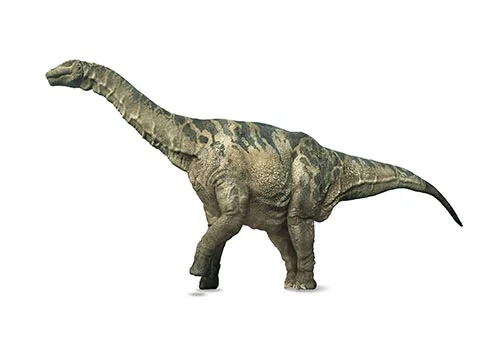Argentinosaurus (Argentina lizard)

Ar-jen-teen-oh-sore-us
José Bonaparte & Rodolfo Coria - 1993
Herbivore
Estimated 22-35 meters long
Sauropod
A. huinculensis (type)
Argentina, Huincul Formation
Late Cretaceous, 93 million years ago
Argentinosaurus Facts
Argentinosaurus is a genus of giant sauropod dinosaurs that lived during the Late Cretaceous period, approximately 97 to 93 million years ago. The genus contains a single species, Argentinosaurus huinculensis, which was first discovered in the Neuquén Basin of Argentina.
Argentinosaurus was one of the largest dinosaurs to have ever lived, with estimates suggesting that it could have measured up to 100 meters in length and weighed between 70 to 100 tons. Despite its enormous size, it was a herbivore that fed on large amounts of vegetation, including leaves, stems, and branches.
In terms of anatomy, Argentinosaurus had a long neck and tail that helped it reach high branches and a large body that provided the necessary support for its weight. It also had a small head relative to its body size and long, columnar legs that enabled it to move efficiently and avoid predators.
Argentinosaurus is a significant dinosaur genus for several reasons. Firstly, it is one of the largest dinosaurs to have ever lived and provides important insights into the maximum size limitations of dinosaur evolution. Secondly, its presence in the Neuquén Basin highlights the importance of this region for the study of dinosaur evolution and diversity during the Late Cretaceous period. Finally, its discovery and the discovery of other giant sauropod dinosaurs in South America provide valuable insights into the biogeography and evolution of dinosaurs in the southern hemisphere.
In conclusion, Argentinosaurus is a fascinating dinosaur species that provides valuable insights into the size limitations of dinosaur evolution and the fauna of the Late Cretaceous period in South America. I hope this brief overview has sparked your interest in this amazing dinosaur genus, and I encourage you to learn more about its discovery, anatomy, and significance.



